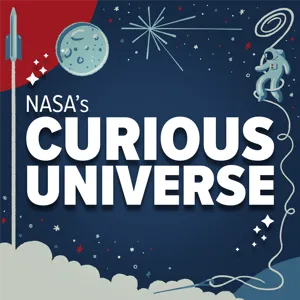Podcast Summary
Journey to the Stars: James Webb Space Telescope's Successful Launch: The James Webb Space Telescope, a billion-dollar observatory with potential for 295 points of failure, successfully launched after a 25-year development process, bringing new discoveries and possibilities for understanding our universe.
The successful deployment and first image release of the James Webb Space Telescope marks the beginning of a new era in space exploration. With a million miles journey from Earth, this complex observatory, which took over 25 years to develop, underwent a critical deployment process with 295 points of potential failure. Despite the risks, each step worked perfectly, leading to the unfolding of its large heat shield and the release of stunning cosmic images. This achievement, which required the best engineers and scientists worldwide, not only brings excitement and relief but also opens new possibilities for understanding our universe. To explore these new discoveries, visit nasa.gov/webfirstimages.
New Images from the James Webb Space Telescope Reveal Cosmic Wonders: The James Webb Space Telescope's stunning new images reveal intricate star forming regions, a giant exoplanet, a grouping of galaxies, the aftermath of a star's death, and the deepest image of our universe ever taken. These images deepen our understanding and appreciation of the cosmos, leaving scientists eager to explore further.
The James Webb Space Telescope, after years of development and anticipation, has captured stunning images of cosmic wonders previously unseen. These include a star forming region with intricate structures, a giant exoplanet, a grouping of galaxies, the aftermath of a star's death, and the deepest image of our universe ever taken. Dr. Michelle Thaller, an astrophysicist, shares her awe and excitement upon seeing these images for the first time, emphasizing their value in making us feel connected to the vastness of the universe. The images not only show beauty but also hold mysteries, leaving scientists eager to explore further. The Webb Telescope's ability to capture both the birth and death of stars provides a unique perspective on the life cycle of celestial bodies. Overall, these images offer a new window into the universe, deepening our understanding and appreciation of the cosmos.
Discovering the universe's hidden stories: The James Webb Space Telescope's advanced infrared capabilities reveal new insights into binary stars, dying stars, galaxy interactions, and exoplanet atmospheres, expanding our understanding of the universe.
That the James Webb Space Telescope's unprecedented capabilities in infrared imaging have allowed us to see the universe in a new light. We can now observe binary stars and the chemistry of dying stars that were previously obscured by dust and gas. These stars are crucial in the formation of heavy elements necessary for life. Additionally, the depth of images from galaxies like Stephan's Quintet has revealed intricate details of their interactions and collisions. Furthermore, the measurement of an exoplanet's atmosphere, such as WASP 96 b, is now possible, providing valuable insights into their chemical composition. Overall, the James Webb Space Telescope is opening new doors to our understanding of the universe, revealing the stories hidden within its depths.
Discovering Water Vapor on WASP-96b and Observing Gravity's Lensing Effect: The James Webb Space Telescope has made groundbreaking discoveries, detecting water vapor on a distant planet and observing gravity's lensing effect on distant galaxies.
The James Webb Space Telescope has made significant discoveries in a short amount of time. WASP-96b, a Saturn-mass planet 1000 light years away, was found to have water vapor in its atmosphere through quick chemical analysis. This discovery showcases Webb's ability to detect the chemistry of distant planets. Additionally, Webb's deep image of the galaxy cluster SMACS 0723 revealed the natural lensing effect of gravity on space, allowing us to see distant galaxies that are even farther away than the cluster. These discoveries demonstrate the incredible depth and reach of the James Webb Space Telescope, leaving us excited for future discoveries, including the potential discovery of an Earth-sized, Earth-temperature planet with signs of water.
A new era of discovery with the James Webb Space Telescope: The James Webb Space Telescope's first images reveal the universe 500 million years after the Big Bang, offering insights into the dawn of the first galaxies and the potential to uncover cosmic history and probe terrestrial planets.
The first images from the James Webb Space Telescope represent a new era of discovery for NASA and the world. These images, which show the universe as it looked around 500 million years after the Big Bang, offer a glimpse into the dawn of the first galaxies. Scientists are excited about the potential to uncover more about the universe's cosmic history and to probe the atmospheres of terrestrial planets. But beyond the scientific discoveries, these images are also a testament to the dedication and passion of the people behind the project. As we explore these incredible images, we're reminded that they belong to all of us, and the universe is about to change in ways we can hardly imagine. To see these images for yourself, visit nasa.gov/webfirstimages. The Curious Universe team is proud to have been a part of this journey, and we'll be back with more adventures this fall. Until then, keep exploring with NASA.






